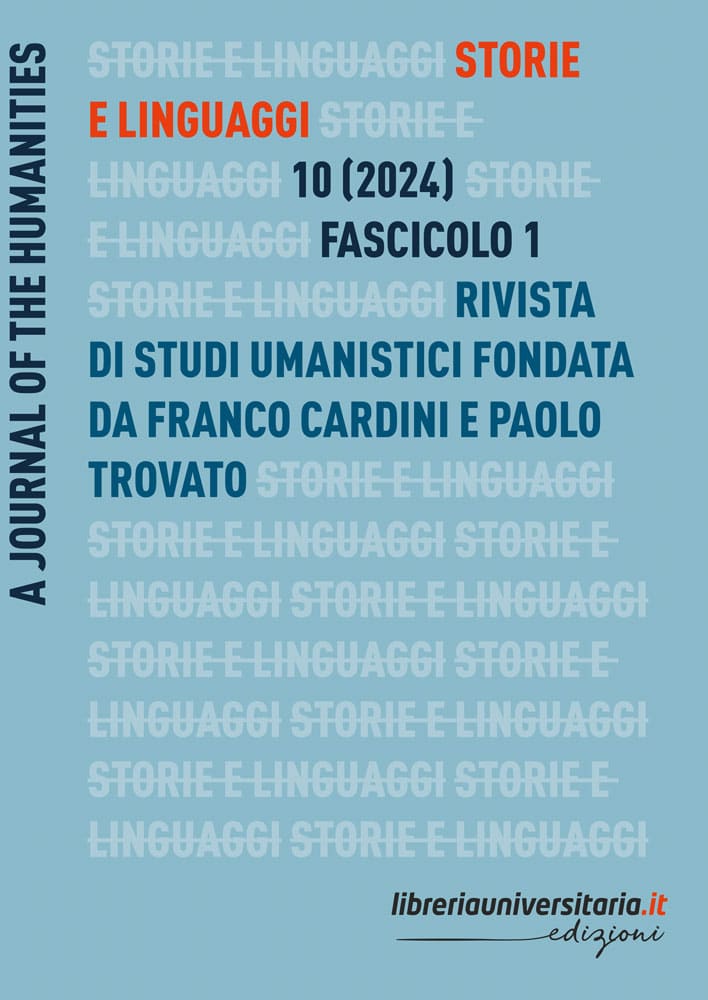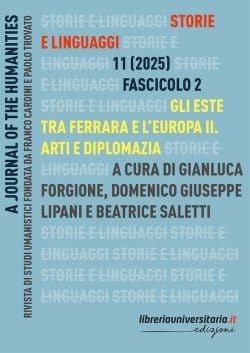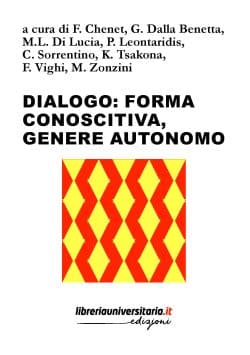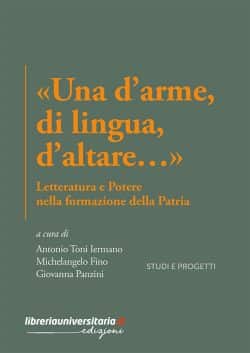Indice
ITA
Nel 1986 David Jacoby annunciava la scoperta di un importante documento inedito sul commercio veneziano tra i porti del Mediterraneo durante l’ultimo periodo del regno crociato (“A Venetian Manual of Commercial Practice from Crusader Acre”, ovvero il ms conservato presso la Biblioteca Marciana It. XI, n. 87). Purtroppo non l’ha mai pubblicato. Questo lavoro descrive il manuale e la sua struttura, propone una contestualizzazione tanto dell’opera quanto delle informazioni che offre, e ne fornisce un’edizione.
ENG
In 1986, David Jacoby announced his discovery of an unpublished important document about Venetian trade among the Mediterranean ports during the last period of the Crusader kingdom, i.e. the MS Venice, Biblioteca Nazionale Marciana, It., Cl. XI, n. 87, fols. 1r–7r. Unfortunately, he never published it. My paper will describe its structure, try to put in context the information the manual offers, and propose an edition of the text.
ITA
Lo studio di Curio Lancillotto Pasi, umanista ferrarese poco conosciuto ma che ebbe importanti contatti culturali, fornisce preziose informazioni per comprendere meglio la cultura italiana dell’epoca. Infatti, emergono numerose relazioni con personaggi di spicco: da Ariosto, a Pomponio Leto, a Filippo Beroaldo. Attraverso un riesame di vecchi e nuovi documenti d’archivio, come anche di opere finora sconosciute (la Bononiae restitutio), emergono gli stretti e duraturi legami culturali del Pasi con gli Este. Infine, lo studio della grammatica latina dell’umanista, la sua opera principale, mette in luce la fortuna di cui il Pasi godette al di fuori dell’Italia; le cure indefesse che l’umanista dedicò alla princeps di quest’opera, volte ad aggiornare le praefationes per opportunità di dedica, e gli incessanti interventi in corso di stampa hanno generato alcune varianti di stato di cui si dà conto al termine dell’articolo.
ENG
The study of Curio Lancillotto Pasi, a little-known Ferrarese humanist who had important cultural contacts, provides valuable information to better understand the Italian culture of the time. Indeed, numerous relationships with prominent figures emerge: from Ludovico Ariosto, to Pomponio Leto, from Filippo Beroaldo to the Este family emerge. Finally, the study of the humanist’s Latin grammar, his main work, sheds light on the fortune Pasi enjoyed outside Italy; on the humanist’s stubborn care in updating the praefationes of editio princeps according to dedication opportunities; on the author’s incessant interventions during the printing of the work, that generated some variant readings, an essay is given at the end of the paper.
Philology at the chancery. About the text of Gasparo Contarini’s dispatches from the Imperial court of Charles V.
ITA
Il saggio propone l’edizione critica di dieci dispacci originali inviati da Gasparo Contarini durante la sua legazione presso la corte di Carlo V. I testi sono collazionati con le minute trasmesse da un manoscritto marciano per appurare le procedure seguite nella cancellerie di Contarini e per accertare l’effettivo contributo dell’ambasciatore nell’elaborazione delle lettere.
ENG
The paper offers the critical edition of ten original dispatches sent by Gasparo Contarini during his legation at the court of Charles V. The texts are compared with the drafts copied on a Marciano manuscript in order to study the procedures followed in Contarini’s chancery and to ascertain the contribution of the ambassador in preparing the dispatches.
The Visioni of Varano and Dante’s imitation.
ITA
Alfonso Varano fu uno dei primi imitatori moderni di Dante. Le sue Visioni sacre narrano di un viaggio nell’oltretomba in cerca della “giustizia divina” per confutare l’idea che Dio salvi solo le persone da Lui prescelte. Questa era la tesi del Giansenismo. Il saggio dimostra che Varano era impegnato a combattere tale tesi che, però, in Italia non aveva successo, anche se aveva dei “simpatizzanti” che si opponevano al lassismo dei gesuiti . Quasi tutti i temi trattati nelle Visioni – predesti nazione, matrimonio, eucaristi a,pesti , potere regio – erano trattati anche dai giansenisti. Varano, come Dante, raggiunge la visione di Dio per portare agli uomini la Sua verità.
ENG
Alfonso Varano was one of the earliest imitators of Dante in modern times. His Visioni sacre narrates a journey into the other world in search of the “justice of God”, in order to dispel the belief that God saves only the persons who He has chosen. This was a tenet of Jansenism. The essay demonstrates that Varano was combatting the orthodox Jansenism which in Italy was not strong at all, but it had nonetheless some sympathizers who opposed the moral laxity of the Jesuits. Almost all the main themes treated in the Visioni – predestination, marriage, eucharist, plagues, royal power – are of Jansenist concern. Varano, like Dante, reaches the vision of God to bring His truths among men.
Scenery and sound events in Calvino’s trilogy.
ITA
L’articolo esamina il motivo dei suoni e dei rumori nella tri-logia araldica di Italo Calvino, dimostrando che accanto al valore della “visibilità”, la percezione uditiva gioca un ruolo centrale non solo come elemento locale nella dinamica dell’azione dei romanzi, ma anche come vero e proprio principio costruttivo degli eventi narrativi.
ENG
The article examines the motif of sounds and noises in Italo Calvino’s heraldic trilogy, demonstrating that alongside the value of “visibility”, auditory perception plays a central role not only as a local feature in the dynamics of the novels’ action, but also as a true constructive principle of narrative events.
A Note about Popular Legends on the Supernatural and Otherness: from Written to Audiovisual Language
ITA
L’alterità e il soprannaturale in Ispanoamerica influenzano sia il contesto sociale sia la produzione artistica. L’interpretazione semiotica di un modello mentale di matrice folkloristica può implicare criticità dal punto di vista sia tecnico sia culturale. Il presente studio si focalizza sulla duplice metodologia narrativa, scritta e visiva/racconto e cinema, di leggende popolari ispanoamericane relative alle bambole stregate con l’obiettivo di analizzare le distinte strategie di rielaborazione artistica e le rispettive peculiarità espressive in relazione ai concetti di “creepypasta” e “uncanny”.
ENG
The otherness and the Supernatural in Hispanoamérica influence both the social context and the artistic production. The semiotic transposition of a folkloric mental model can involve technical and cultural problems. This essay is focused on the double narrative methodology (written and visual/tale and cinema) of urban and popular legends from Latin America concerning hunted dolls in order to analyse the different strategies of artistic production and their distinctive expressive features with the focus on “creepypasta” and “uncanny”.





